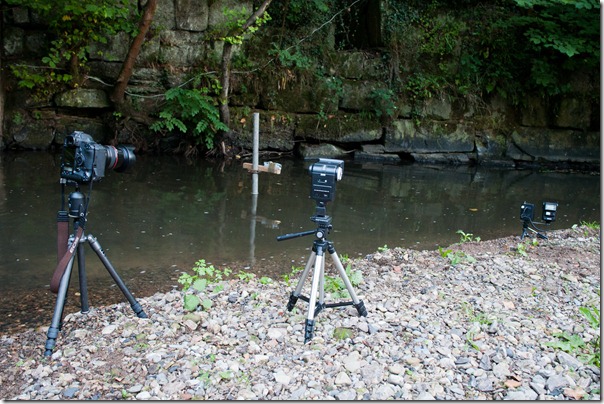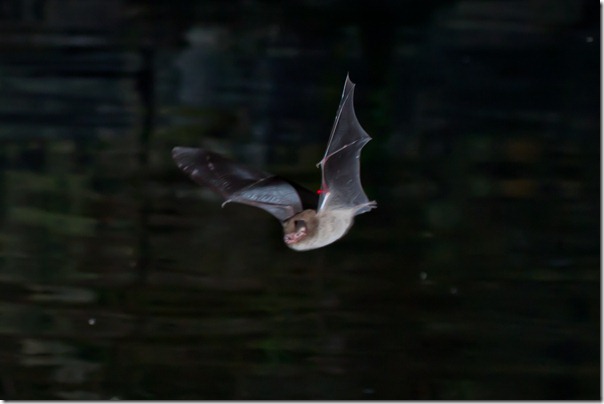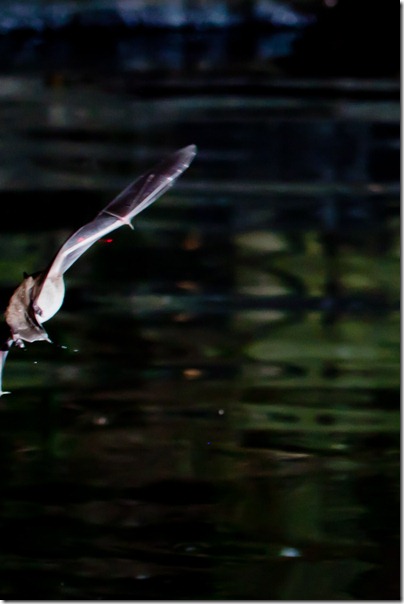And so to Plan B. The bats were flying over open water, so the laser beam had to be set up to intercept them:
A scaffolding pole was set up in the middle of the water, to which the laser was attached. The sensor unit was set up on the shingle bank, and was connected to a small flashgun which was angled so as not to throw light into the camera lens, but activate the flash trigger on the main flashgun, pointing at the laser beam.
Last night, the bats hunted over the main pool below the bridge, but did not hunt the pool where my equipment lay in wait. Perhaps they were put off by the pole in the middle of the water? Tonight, however, they did, and I have my first pictures:
There are lessons to be learnt from this photograph. First, the red spot from the laser shows that the bat has moved only a very short distance after interrupting the laser beam before the flash went off. No problems here. Secondly, there is motion blur rather than out-of-focus blur, so next session, I must turn down the power on the flashgun in order to shorten the flash duration.
The next photograph was at the very edge of the frame, and the bat was moving away from the camera.
These bats (Daubenton’s) can catch insects on the surface of the water by scooping them up with the flap of skin joining the rear legs and tail.
This bat seems to have done just that, because it is possible to see some droplets of water falling from the bat’s back legs.
Later on, we noticed some bats apparently flying through the beam without triggering the flash. This turned out to be due to the battery in the sensor box needing re-charging, and it explained this apparently mystifying photograph:
The red lines on the right hand side is a bat flying through the laser beam without triggering the flash! I’ll make sure that doesn’t happen again …



